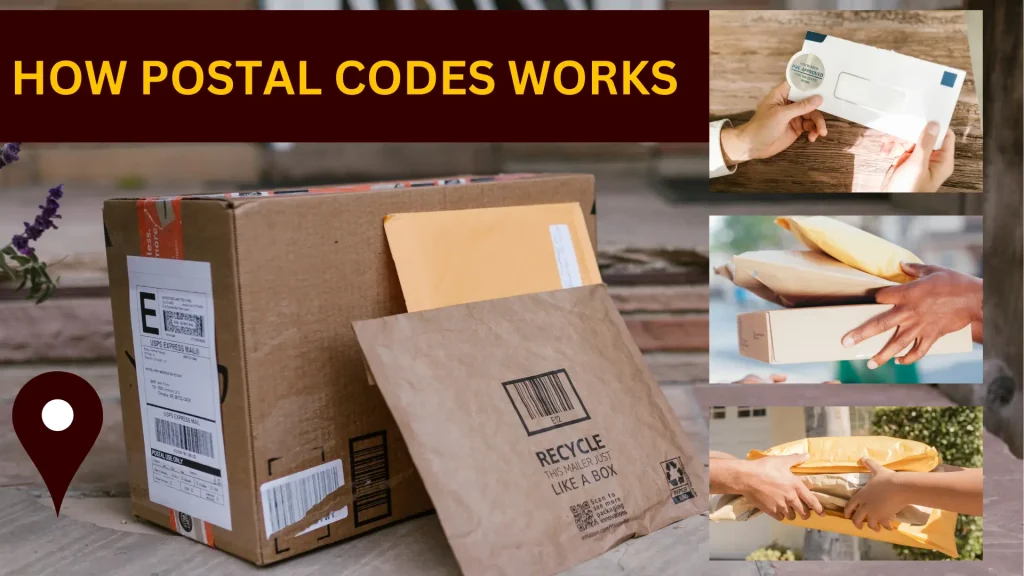Understanding Postal Codes & Zip Codes: How They Work and Why They Matter
Postal codes, or zip codes in some countries, are a vital part of mailing systems worldwide. They’re more than just random digits or letters; they represent a systematic method of organizing mail delivery, courier tracking and delivery to ensure efficient and accurate sorting. But how do postal or Zip codes work, and why do they exist if we already have street addresses? Let’s break it down.
What is the Purpose of a Postal Code?
A postal code is a series of digits or letters assigned to specific geographic areas. It serves as a secondary identifier that complements a street address, guiding the mail on its journey from sender to recipient. While the address tells you where the letter is headed, the postal code shows how to get there. Moreover it also helps the courier services like USPS, DHL, Estes, Ontrack, Laser ship, TForce and may more to align their shipments and services.

How Do Postal Codes Work in the United States?
In the United States, the postal system uses a 5-digit zip code. These five digits play a key role in sorting mail at various stages of delivery. The first digit divides the country into 10 distinct regions, beginning with New England and stretching all the way to the West Coast. Here’s a breakdown of the first digit:
The Function of the First Three Digits
The next two digits, when combined with the first, narrow down the area further. These numbers don’t just represent geographic locations; they indicate sorting centers or sectional centers responsible for handling the bulk of the mail.
For example, if you’re mailing something from California to Montana, the ZIP code’s first three digits might be the same for both regions because both are served by a similar sorting facility. This means that the zip code system is more about logistics than geography.
The Fourth and Fifth Digits: The Final Steps
The last two digits of the postal code provide an even more specific location, pointing to the local post office that handles final delivery. However, there’s an optional extension called the ZIP+4 code, which includes four additional digits for even more precise identification, often down to the specific delivery route or building.
United States ZIP Codes by State and City
New York ZIP Codes

California ZIP Codes
Texas ZIP Codes
Florida ZIP Codes
Illinois ZIP Codes
Pennsylvania ZIP Codes
Georgia ZIP Codes
Other Major Cities ZIP Codes
International Examples: How Do Other Countries Handle Postal Codes?
Every country has a different system of postal and zip codes, but the principles are generally the same. Let’s look at two examples: the United Kingdom and Ireland.
The UK Postal Code System
In the UK, the system uses alphanumeric codes (a mix of letters and numbers), making it more complex than the U.S. system but also more memorable. Cities like Manchester and Oxford are assigned codes that make them easy to remember, such as M for Manchester and O for Oxford. The format typically involves the following:
This system allows for a great deal of accuracy, meaning in some cases, the postcode alone can be sufficient for delivery.
Ireland’s Postal Code System
Ireland’s postal codes are unique. The Irish system uses randomly assigned codes to avoid the need for complex geographic ordering. They’re designed for automated sorting, with each code corresponding to a specific area, while the final digits help pinpoint the exact delivery point, functioning similarly to a GPS code.
While this may seem inefficient, the randomness of the system makes it much easier for sortation machinery to handle mail with precision. The key benefit is that postal or zip codes in Ireland don’t change, even if nearby areas grow or evolve. This stability simplifies things for residents, as their codes stay the same even as the country’s infrastructure changes.
Why Postal Codes Are More Than Just for Geography
Postal codes are not just about identifying where an address is located. They play a significant role in the mail sorting system. In many countries, like the U.S., the postal code provides key insights into the sorting infrastructure, determining the path that the mail will take through various centers before arriving at its final destination.
For instance, in the U.S., even though states have distinct boundaries, the sorting centers determine the flow of mail, meaning your ZIP code could point to a sorting facility in a neighboring state, not necessarily within your own state’s borders. This is why ZIP codes don’t always correlate directly with geographical locations.
Why the Need for Such Complexity?
The complexity of postal codes exists primarily for efficiency and precision. As the volume of mail continues to grow, it’s important for the postal system to sort and deliver mail in the quickest and most accurate way possible. By using postal codes, sorting centers can process mail faster and with fewer errors, which means quicker delivery times for recipients.
Moreover, the use of postal or zip codes helps streamline logistics and distribution. For businesses, having precise postal code data ensures that packages and letters are sent to the correct addresses with minimal delay.
The Future of Postal Codes
In a world dominated by digital communication, one might wonder whether postal codes will remain relevant. While digital technology, such as GPS, is improving the accuracy of location-based services, postal codes still hold significant value for physical mail delivery. They provide an organized, easy-to-follow system that can’t always be replaced by technology.
As automation in postal services continues to evolve, systems like Ireland’s random postal codes could become more common. These codes are designed for efficiency, taking full advantage of sorting machines and modern logistics.
Conclusion
Postal codes are far more than just a series of numbers or letters; they are an integral part of how the world’s mail is sorted, processed, and delivered. While different countries have developed their own unique systems, all share the same core goal: to make mail delivery as efficient and accurate as possible. Whether through the U.S. zip code system, the UK’s alphanumeric codes, or Ireland’s random codes, each system has its merits. As technology evolves, the role of postal codes may shift, but they will undoubtedly remain an important part of global mail systems for years to come.